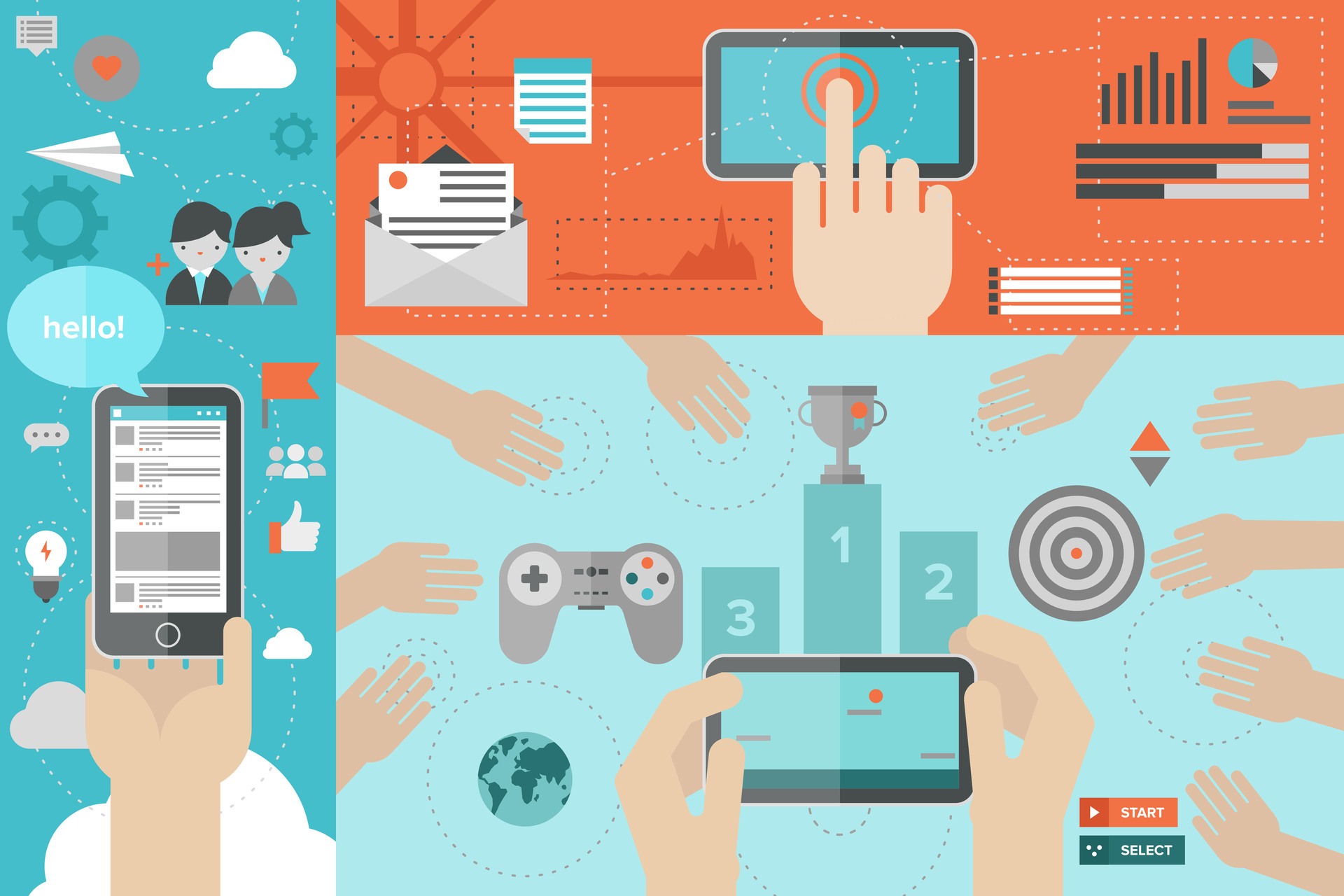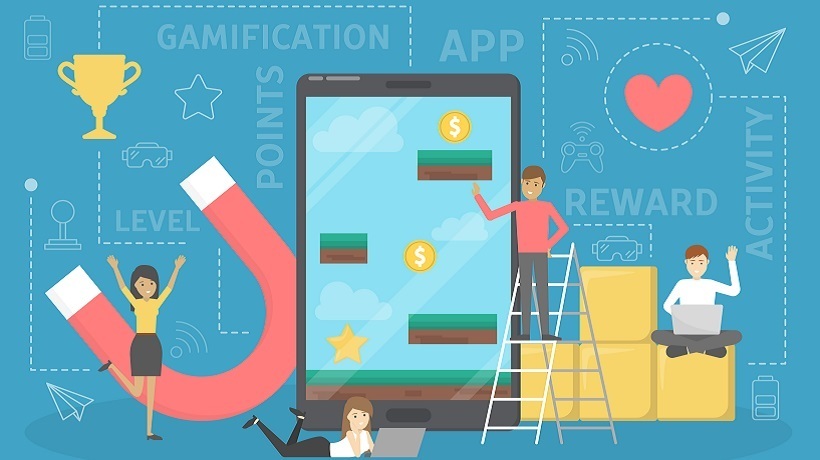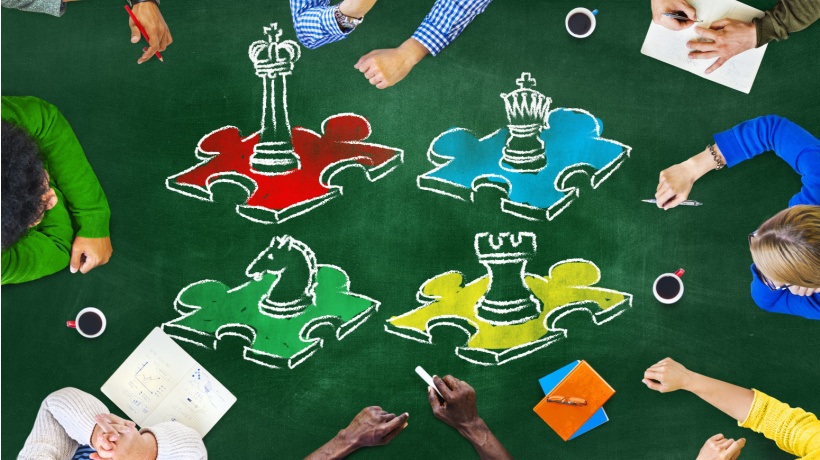Gamification In eLearning: Science and Benefits
Gamification in eLearning has become increasingly popular since it offers a wide range of advantages for learners and can help make the overall eLearning experience not only more enjoyable but more effective too. As a matter of fact, there is an exact science behind why gamification in eLearning is so successful. Regardless of your audience or subject matter, gamification in eLearning can help you create exciting, educational, and entertaining eLearning courses. But before we get into the science, it's worth discussing the distinction between gamification and serious games, as many seem to confuse the two terms.
Differences Between Gamification And Serious Games
Gamification and serious games are often grouped together. It's true that they both motivate online learners and enhance their eLearning experience. However, there are certain characteristics that set them apart. On the one hand, gamification blends game mechanics with traditional eLearning activities and modules. Leaderboards, points, levels, and eLearning badges add that extra incentive online learners need to actively participate and serve as eLearning benchmarks. Choosing the right game mechanics is of the utmost importance. You must conduct in-depth audience research to determine what drives them. For some, leaderboards may cater to their need for friendly competition. While others prefer to earn eLearning badges, points, and other asynchronous rewards.
On the other hand, serious games follow the typical game structure, but also have some form of training value. For example, online learners must overcome a series of in-game obstacles in order to build essential skills. Serious gaming is fun, entertaining, and interactive. However, it also aligns with specific learning objectives and goals. While gamification involves the traditional eLearning course structure, serious games can exist independently. That being said, they are ideally suited for positive reinforcement and "just-in-time" online training. As a result, serious games should NOT be standalone eLearning activities and are a great addition to comprehensive eLearning courses.
How Science Supports Gamification In eLearning
When we participate in activities that stimulate our bodies or minds, such as exercising, our body releases a hormone known as endorphins. The same effect can be achieved by playing eLearning games that challenge learners or give them the chance to achieve a particular reward, even if that reward is something as simple as moving onto the next level. When these endorphins are released, learners not only have more fun during the eLearning process but they actually retain more information. Endorphins also bring on feelings of calm and well-being. It's also important to note that gamification in eLearning creates a sense of excitement within the learners because they feel that they are accomplishing something, thanks to the endorphins that are being released. This excitement leads to a boost in motivation and makes the experience more powerful and memorable.
The Top 7 Benefits Of Gamification In eLearning
Below you'll find just a few of the top benefits that are commonly associated with gamification in eLearning.
1. Increases Learner Engagement
Gamification in eLearning can help eLearning professionals create experiences that fully engage their learners. Gamification holds their attention and motivates them, given that they are striving to reach a goal. Some online learners may already be intrinsically motivated to reach their goals. However, there are others who need that extra nudge to actively participate. When learners feel positive about their learning process and know that they are going to be rewarded in some way for their efforts, then they stop becoming passive observers and turn into active participants. By doing so, they are able to effectively absorb the information and commit it to their long-term memory, because the knowledge itself is linked to the favorable experience you've provided through gamification in eLearning.
2. Makes eLearning Fun And Interactive
While you may have a variety of learning goals and objectives you want to achieve throughout the eLearning course, none of these outcomes can be effectively achieved if the learners aren't really excited about what they are learning. Gamification in eLearning makes learning not only informative but fun and exciting too. It also adds an interactive element to your eLearning courses. This creates the feeling of immersion, which offers learners the opportunity to feel as though they are an integral part of the overall learning process.
3. Improves Knowledge Absorption And Retention
Whether you are designing an eLearning course that is centered around compliance training or one that focuses on eleventh-grade biology, the goal is always the same; to instill knowledge within your learners. Even more importantly, learners must be able to access this knowledge when they actually need it in the real world. Gamification in eLearning can improve knowledge absorption and boost knowledge retention by blending endorphins and the awareness of real-world benefits.
4. Sparks Friendly Competition
Friendly competition drives online learners to do their best and outdo their peers. Gamified eLearning pits online learners against one another and allows them to test their own mettle. One of the most effective game mechanics for this purpose is leaderboards. Online learners compete to reach the top of the board and prove that they have what it takes to succeed. However, there is a catch. Certain online learners may find leaderboards off-putting. As such, you should always give them the chance to opt out and offer alternative gaming rewards. For example, certificates or unlockable objects.
5. Gives Learners The Opportunity To See Real World Applications
Gamification in eLearning allows learners to see the real-world applications and benefits of the subject matter. They are able to get a first-hand look at how their choices within the game result in consequences or rewards. If they don't fare well, then they aren't rewarded for their actions or aren't able to progress to the next level. In essence, you give them the chance to explore a topic at length and get a firm grasp on how they might be able to apply that information outside of the virtual classroom, while they are in a fun and risk-free environment. Online learners may think that they're just trying to earn an eLearning badge, but in reality they are gaining real-world experience without the risk. Then, when they do venture out into the world, they will have the power to put that knowledge to good use in professional or personal settings.
6. Facilitates Mistake-Driven Learning
Mistakes can be valuable teachers. They show us what we need to work on and where we excel. Both gamification and serious games involve an incentive-based system. As a result, online learners get the immediate feedback they need to identify areas for improvement. Everyone is able to make mistakes and fine-tune their strategy in a safe environment. For instance, an online learner doesn't earn the points they need or is unable to advance to the next level. This indicates that they have a performance or skill gap holding them back. They are also able to see the outcome and repercussions of their behaviors before they enter the real world. Every mistake online learners make is a chance to improve and reflect on their cognitions.
7. Enhances The Overall Learning Experience For All Age Groups
Regardless of whether you are designing eLearning deliverables for adult learners or K-12 students, gamification in eLearning can help make the overall eLearning experience much more effective. If learners are having fun and are getting excited about learning, then they are more likely to actually acquire information. Even a dull or complicated subject matter can be absorbed more easily because learners are enjoying the process and actively participating. In fact, you can even integrate gamification into your eLearning courses in such a way that learners won't even know they are acquiring new information. Knowledge absorption simply becomes a byproduct, as they are focused on achieving rewards and accomplishments within the eLearning course. This is often when real learning takes place, however, as the boundaries that often hinder the learning process are removed.
How To Measure Serious Game And Gamification Effectiveness
This eLearning approach isn't all fun and games! Gamification and serious games give you the ability to track online learner performance and eLearning effectiveness. One of the best ways to accomplish this is using a Learning Management System with robust reporting and analytics. Many platforms allow you to monitor online learner progress and completion times. As such, you can identify areas of the serious game or gamified eLearning course that need some extra work. For example, the data reveals that 50% of your online learners can't make it past the third level or are unable to unlock the relevant badges. Thus, you're able to fine-tune your eLearning strategy and give online learners the additional resources they require.
Now that you've learned about the scientific evidence in favor of gamification in eLearning, as well as the many benefits it can offer, why not try integrating gamification into your next eLearning deliverable? If you're looking for a way to transform your eLearning course into a dynamic and rich learning experience for your learners, then gamification in eLearning may be the ideal solution.
Would you be interested in the most effective uses of Gamification in Learning? In the Free eBook How Gamification Reshapes Learning you will find useful gamification tips provided by 23 Gamification experts!
Last but not least, I highly encourage you to check the Infographic 30 Facts About Gamification in eLearning.

Find more education infographics on e-Learning Infographics









